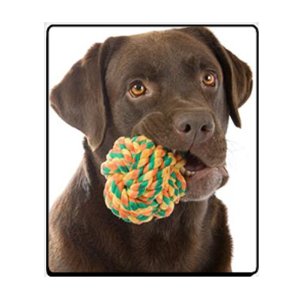Responsible dog ownership is very important for anyone who plans to own a dog. Most elements of responsible dog ownership are common sense but they always bear repeating.
1. Before you get a dog ask yourself if you have enough time to properly take care of him or her. Do you have the time to housebreak and train a puppy? Can you afford good veterinary care and good dog food? Can you make the commitment necessary to care for a dog? Is everyone in your home able to make the same commitment?
2. When choosing a dog, make sure that you choose the right dog for you. This means considering your lifestyle and circumstances. Do you like grooming? Do you have time to groom? If you don’t, then don’t get a longhaired dog that requires a lot of weekly or even daily grooming. Do you live in a small apartment? Then you shouldn’t get a very active dog that needs lots of room to run. (But remember that size isn’t always an indication of how active a dog is. Some very large dogs are quite happy to sleep all day while some small dogs can be extremely active.) Do you have children? By all means choose a breed that’s known for being great with kids. In other words, think before you get a dog. Don’t choose a dog impulsively.
3. Once you bring your new puppy or dog home be sure to take him or her to the vet for a check-up. This is the most responsible thing you can do for several reasons: a) You need to confirm that the seller has given you a healthy puppy or dog; b) You need to be certain that the dog will not pass on any illness to other pets; c) You should be sure that your new puppy or dog is current on vaccinations for his or her own protection and for yours. Most cities and states require dogs to be vaccinated, at least for rabies. Check with your city or with your vet to find out about the vaccination requirements in your area.
4. Be sure that you provide your dog with fresh water at all times and with healthy dog food. Educate yourself about the ingredients in dog food. Learn what makes a good food and what your dog needs in his diet. Not all dog foods are created equal. Some dogs are full of cheap fillers and other foods are made of expensive organic ingredients. Find out what your dog actually needs so you can make an informed choice about his food.
5. Keep your dog responsibly contained and do not let him wander the neighborhood. Virtually every city and town in North America has leash laws of some kind that require dogs to be kept leashed or on their owner’s property. A good fence or a leash when you are walking your dog will keep your dog from roaming. Dogs that are allowed to roam and wander may become lost or hit by cars. If picked up they can go to animal shelters where they may be put to sleep. Keep your dog safely contained for his own protection.
6. If you do not intend to responsibly breed your dog you should consider having him or her neutered or spayed. Neutering and spaying prevents unwanted pet pregnancies and saves you from having to find homes for unexpected puppies. Responsible breeding is not easy. It entails health testing the parents, researching pedigrees, planning and overseeing matings and researching homes for puppies. Unless you plan to undertake these activities most pets are better off being spayed and neutered unless you have reason to believe that your dog would have a health problem with such surgery.
7. Do the right thing for your dog even when it’s difficult. This means that when your dog has reached the end of his days and there is no more that the vet can do for him, you will have to make the difficult decision to say goodbye. Stay with your dog and comfort him till the end.
Being a responsible pet owner is a big job. It means that you have to think of everything for your dog from the time before you get him until the end of your days together. But, in return, your dog will give you all the love in his heart and soul. It’s a good trade.
What Does It Mean To Be A Responsible Dog Owner courtesy of Dog Articles.
Looking for a great gift idea? Who wouldn’t love a clip board showcasing their favorite breed? Check out all of the great doggie gift ideas on Amazon.com –doggieoftheday@amazon.com










